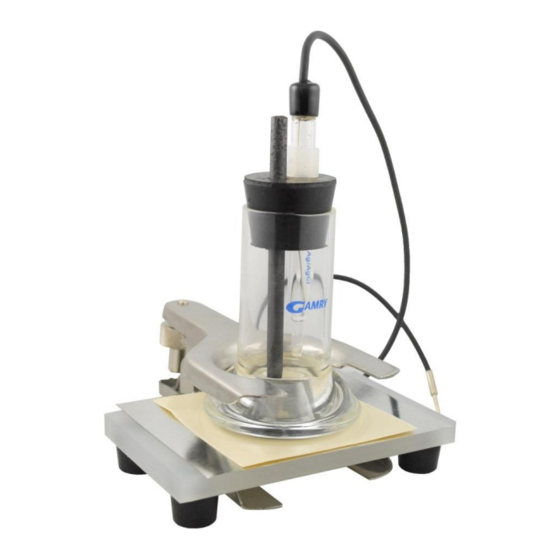Gamry Instruments PTC1 Manuel de l'opérateur - Page 10
Parcourez en ligne ou téléchargez le pdf Manuel de l'opérateur pour {nom_de_la_catégorie} Gamry Instruments PTC1. Gamry Instruments PTC1 16 pages. Paint test cell kit

Cell Setup
1. Test your thin samples in a setup that includes the PTC1 base (a polypropylene block equipped with
four rubber feet). Place a sample on the side of the base without the feet.
2. Place the cell body on top of the sample, making sure that the O-ring fits in the groove on the cell
body. This O-ring makes a watertight seal between the cell body and the sample.
3. With the clamp, affix the glass to the base. Use
the knurled knob on the cell clamp to
compress the O-ring.
4. Fill the cell with the test solution (approximately 40 mL of solution).
5. Place the top, with the reference and counter electrode already in place, on the cell. Make sure that
the protective cap is removed from the reference electrode. With the top lightly pressed into the cell
body, you should have a watertight seal.
6. Before making the connections to the test instrument, check that the cell is not leaking from the O-ring
seal. After you are sure the cell is not leaking, connect the test instrument. The metal sample is used as
the working electrode.
Working Electrode Area
The area of the sample exposed to the test solution varies somewhat because of variation in the compression in
the O-ring and variation in the glass cell body. Gamry Instruments measured the active area to be nominally
14.6 cm
2
. At worst, the actual area should be within ±5% of this value.
Cell Setup
8
